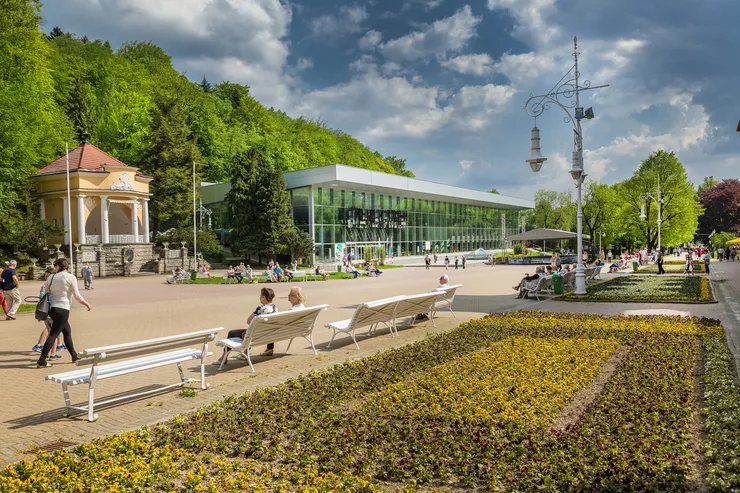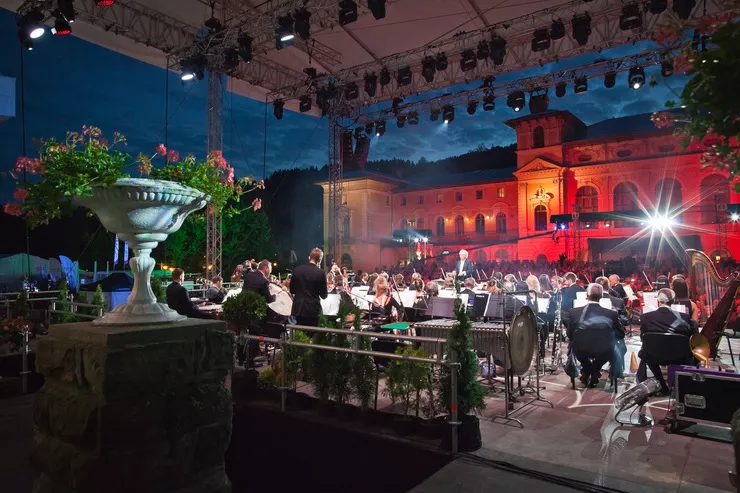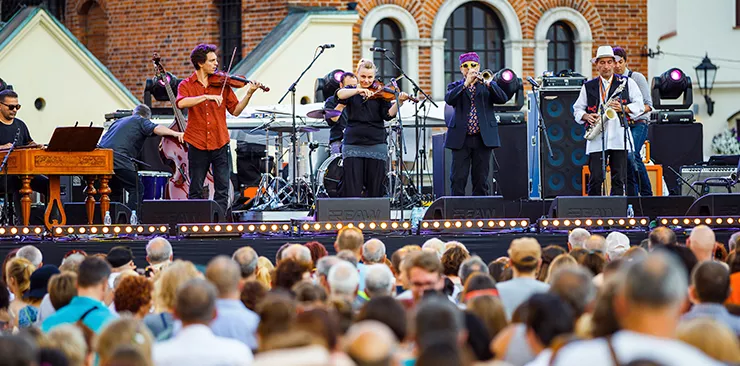The primary allure of Krynica-Zdrój (both the words in its name used to mean “a spring” or “a source” in Polish) lies in its mineral waters, which have been lauded for their curative properties since the early 18th century. The therapeutic potential of these waters was officially recognised fifty years later when they were recommended for drinking and bathing purposes. The subsequent establishment of wells was accompanied by the construction of charming wooden pavilions. Krynica experienced its golden age in the early 20th century when it welcomed over 10,000 visitors annually.
To savour the local mineral waters, head to the two iconic pump houses: the old (Stara Pijalnia) and the new (Nowa Pijalnia). Here, you can explore the curative properties of the waters and sample a variety of local varieties. Zdrój Główny, literally “the main spring,” offers a taste reminiscent of Kryniczanka, one of Poland’s beloved mineral water brands, bottled locally and enjoyed nationwide. Other options include Słotwinka, Jan, Mieczysław, and Zuber.
For those seeking leisurely strolls along the central promenade, Krynica-Zdrój offers an array of attractions, with the renowned Jan Kiepura Festival being the key attraction of August and September. This extraordinary event showcases approximately 1000 artists from theatres, music theatres, and pantomimes, attracting an enthusiastic audience of around 20,000 to the main promenade concert alone. Additional concerts are organised throughout the high season, even though the International Guitar Festival is organised in February.
The more adventurous souls can embark on invigorating hikes, such as ascending Park Mountain (Góra Parkowa), whose graceful slopes grace the eastern part of Krynica. You can reach its peak (742 m asl) by traversing the picturesque woodland paths or taking the funicular train from the centre of the spa. Another rewarding option is venturing to the Czarny Potok district by crossing the low range that separates it from the main part of Krynica. From there, you can embark on longer treks to Jaworzyna Krynicka (1114 m asl), a popular skiing destination in winter, just like Słotwiny slightly to the north of Krynica. Cycling enthusiasts will also delight in the extensive network of routes of varying difficulty and elevation surrounding the spa.
How about indulging in a sip of Krynica’s most renowned treasure – its mineral waters? Prepare to encounter the distinctive aroma of Zuber, a water celebrated for its abundant health benefits but not perhaps for what some could call a characteristic pong.















